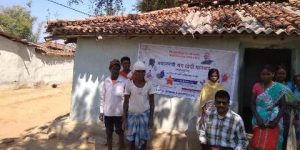
ICTpost Health IT Bureau
Establishing and maintaining a healthy and diverse Health Information Technology (HIT) Ecosystem will be critical if we want to reach our ultimate goal of healthier populations at a lower cost. Healthcare professionals understand the huge financial burden of having so many chronically ill patients, and the staggering statistics show just how serious the situation is today.
Up to 280 000 life years could be gained through individual prevention programmes in India every year. When effects on disability are accounted for, interventions can save up to 310 000 years of life in good health.
The cost of an affordable prevention package in India. A prevention strategy to tackle unhealthy diet and physical inactivity can contribute to a package designed to tackle the main risk factors for chronic diseases, including also tobacco, alcohol, high blood pressure and high cholesterol. In India, such prevention package could be implemented for an annual cost of US$ 1.5 per head. Interventions to tackle unhealthy diets and physical inactivity would cost US$ 0.35 per head.
See: The Third Lancet Series on Chronic Diseases
Technology can help by automating much of the process that enables us to understand and improve our patients health. But it is not just about the technology. It is also important to have key insight into what changes we must make to move the needle in the right direction for long-term success.
Overwhelmingly, healthcare providers saw the EHR as a panacea that would solve their problems and automatically improve patient care. But with all other industries, the story is quite different. Financial, manufacturing and telecommunications companies bring together many different software products and business intelligence tools to create solutions.
Successful HIT Ecosystem
What does a healthy HIT Ecosystem look like? What types of tools does it take? The EHR is simply the data collector, not the data analyzer, so it takes more than just the EHR to help create healthier populations. We also need business intelligence and analytics tools that give us deeper insight into the health of our patients, and the health of the businesses that deliver care and we need to be able to balance both. This means that providers can’t just look at clinical data and know exactly what needs to be done for their patients; they also need to look at operational and financial data. By understanding the bigger picture and looking at patient populations, providers can change procedures, track outcomes and draw actionable conclusions. In order to do this with confidence and success, you need multiple tools that allow you to look at all the different elements of creating a healthier population, including, but not limited to, population management.
The Indian healthcare organizations today need adding analysis tools that would give them insight into their efforts and the health of their patients, helping them identify their high-risk patients. They must realize that we have to stop measuring people who are sick right now and start looking at who is on the verge of becoming sick by taking the proactive approach.
We no longer live in a world where doctors can sit back and wait until a patient comes to them with a health problem. Having ready access to lab data, weight measures, lifestyle habits and many other factors gives us information into the signs that will lead to chronic disease. By looking at all these factors early on, and utilizing a healthy and diverse group of technology systems, we can proactively move our patients in the direction towards better health at a lower cost.







